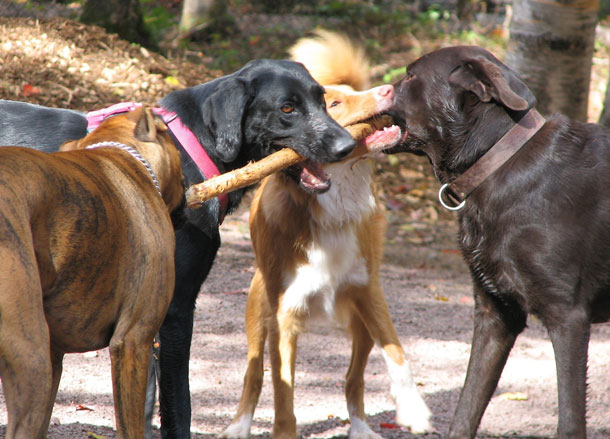Canine Influenza Virus Update
It’s been a year since Chicago got caught up in and defeated by the Canine Influenza Virus Apocalypse of 2015. While the collective veterinary world knocks on wood, we can say that there has not been the return we were dreading. However, we are not free from all concerns, so here is a flu review and information on current recommendations.
Before last year, the canine influenza virus (CIV) vaccine protected dogs from the H3N8 strain, which was the only strain circulating in the United States. The cause of the Chicago outbreak of 2015 was identified as a new strain, H3N2, previously seen only in southern China and South Korean dog populations.
Typically CIV cases are not typed by a diagnostic laboratory, but with last year’s outbreak most of the cases that were sent in were identified as the H3N2 strain. Now we don’t have any way to know if the older strain, H3N8, is truly gone or merely overshadowed by the more vibrant and headline-grabbing H3N2.
The most obvious and most-often asked question is: How should you protect your dogs?
If your dogs have previously been vaccinated against H3N8, should they continue to be boostered? Should we add H3N2 to their vaccination protocol in addition to or in place of H3N8? Or if the outbreak is over and not really having much effect on the city, is either vaccination needed?
The absolute safest thing to do if you want to confer the most protection against CIV is to vaccinate your dogs against both strains. The first time dogs are vaccinated against one of the strains, they need a one-time booster after two to three weeks, and then subsequent yearly boosters after that to continue to have protection. That being said, the most recent outbreak seemed to be attributable to the H3N2 strain. Though we can never say that the H3N8 strain is gone, we can say with some certainty that it is much less prevalent. Therefore, your dog is much less at risk for this virus. Many owners are choosing, reasonably, to vaccinate their pets only against the new H3N2 strain.
Other factors that must be considered include your dog’s relative risk of contracting CIV and potential negative side effects of the vaccine. The vaccine is safe, but, as with all vaccines, they should not be administered to animals that are currently sick or immunocompromised in any way. The CIV vaccine is an optional vaccine (sometimes called a “lifestyle vaccine”). If your dog is social and goes to dog parks, the groomer, or doggy daycare, or if your dog has contact with other socially active dogs because you live in an apartment complex with a swinging doggy social scene, these are reasons to choose the vaccination(s).
There are still lots of things we don’t know. Did the anticipated outbreak of 2016 fail to happen because of increased awareness? Herd vaccinations of the Chicago dog population? Unknown natural reasons? Will the virus mutate, as it often does in human flu strains? Will the new H3N2 vaccine be effective, and for how long?
Having your dogs vaccinated doesn’t guarantee that they will be free from sickness, but we can guarantee to help you weigh your dog’s options and needs and support the decision you make.
For more background information about CIV, please refer to the American Veterinary Medical Association FAQ. And please do not hesitate to call us with questions about this or other issues.
Thank you,
Brett Grossman, DVM
Drew Sullivan, DVM
Medical District Veterinary Clinic

